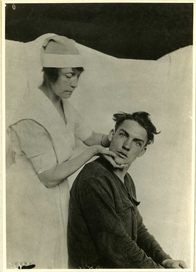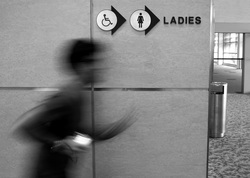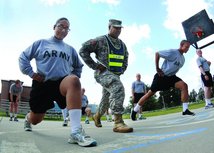- Home
- About Us
- TSPT Academy
- Online Courses
-
Resources
- Newsletter
- Business Minded Sports Physio Podcast
- Day in the Life of a Sports PT
- Residency Corner
-
Special Tests
>
-
Cervical Spine
>
- Alar Ligament Test
- Bakody's Sign
- Cervical Distraction Test
- Cervical Rotation Lateral Flexion Test
- Craniocervical Flexion Test (CCFT)
- Deep Neck Flexor Endurance Test
- Posterior-Anterior Segmental Mobility
- Segmental Mobility
- Sharp-Purser Test
- Spurling's Maneuver
- Transverse Ligament Test
- ULNT - Median
- ULNT - Radial
- ULNT - Ulnar
- Vertebral Artery Test
- Thoracic Spine >
-
Lumbar Spine/Sacroiliac Joint
>
- Active Sit-Up Test
- Alternate Gillet Test
- Crossed Straight Leg Raise Test
- Extensor Endurance Test
- FABER Test
- Fortin's Sign
- Gaenslen Test
- Gillet Test
- Gower's Sign
- Lumbar Quadrant Test
- POSH Test
- Posteroanterior Mobility
- Prone Knee Bend Test
- Prone Instability Test
- Resisted Abduction Test
- Sacral Clearing Test
- Seated Forward Flexion Test
- SIJ Compression/Distraction Test
- Slump Test
- Sphinx Test
- Spine Rotators & Multifidus Test
- Squish Test
- Standing Forward Flexion Test
- Straight Leg Raise Test
- Supine to Long Sit Test
-
Shoulder
>
- Active Compression Test
- Anterior Apprehension
- Biceps Load Test II
- Drop Arm Sign
- External Rotation Lag Sign
- Hawkins-Kennedy Impingement Sign
- Horizontal Adduction Test
- Internal Rotation Lag Sign
- Jobe Test
- Ludington's Test
- Neer Test
- Painful Arc Sign
- Pronated Load Test
- Resisted Supination External Rotation Test
- Speed's Test
- Posterior Apprehension
- Sulcus Sign
- Thoracic Outlet Tests >
- Yergason's Test
- Elbow >
- Wrist/Hand >
- Hip >
- Knee >
- Foot/Ankle >
-
Cervical Spine
>
- I want Financial Freedom
- I want Professional Growth
- I want Clinical Mastery
 This study was released in the March 2013 edition of JOSPT. Anyone who has worked in a physical therapy clinic understands that neck pain is a very common problem. Researchers estimate that as many as 1 in 4 patients in an outpatient PT clinic are referred for neck pain. This specific study by Masaracchio et al assessed the short-term (1 week follow up) effects of adding thoracic spine thrust manipulation in addition to cervical spine Grade III non-thrust P-A mobilizations. 66 participants were randomly selected to either the experimental or control group. Subjects were excluded if they had symptoms distal to the shoulder, pain for >3 months, or a Neck Disability Index score <20%. The subjects in the experimental group who received both the thoracic spine and cervical spine manual therapy had statistically significant changes in their pain as indicated by decreased scores on the Numeric Pain Rating Scale and significantly lower scores on the Neck Disability Index. These results add to the body of literature suggesting the benefits of manual therapy in patients with mechanical neck pain. Different theories exist as to why the thoracic spine manipulation group showed greater improvements. First, there is a clear biomechanical link between the C-spine and T-spine. By moving the thoracic spine, the cervical spine pain generators experience decrease stress. Another explanation discusses changes in mechanoreceptor sensitivity when a thoracic spine thrust manipulation is performed. While thoracic spine manipulation may not have high specificity, several studies have demonstrated that "regardless of the manual therapy intervention chosen, individuals experienced a reduction in pain levels following manual therapy interventions." Some people may argue that this study only assessed patients at 1-week follow up, and it did not investigate long term reductions in pain. With that said, by having the capability to significantly reduce a patients pain in 1-weeks time, you have much more freedom with your intervention selection. Lowering the significance of pain and disability will greatly improve patient satisfaction, patient buy-in, and your ability to prescribe the necessary exercises. To view the full article click here. References:
Masaracchio M, Cleland JA, Hellman M, Hagins M. (2013). Short-Term combined effects of Thoracic spine thrust Manipulation and Cervical spine nonthrust Manipulation in Individuals with Mechanical Neck pan: A Randomized control trial..JOSPT. 2013 March; 43(3): 118-127. Web. 20 September 2013.
1 Comment
 Gray Cook's latest post is how the three R's (Reset, Reinforce, Reload) are essential to rehabilitation. The first issue discussed is differentiating between chemical and mechanical problems. From Cook's perspective, chemical/inflammatory limitations are not appropriate for many interventions due to things like muscle inhibition (this is a debatable topic as the use of exercise during inflammation can potentially be beneficial). The first R, Rescue, indicates more passive techniques such as manual therapy to restore normal mobility. Reinforce can be accomplished either through protection or correction - protect with braces/orthotics/stopping destructive behaviors or correct with taping or corrective exercises. Reload is based upon therapeutic exercises when we build upon the changes that we made. Cook also includes an audio clip that explains this information further. Check out his post for more information.  We would like our followers to know that we now have an official Twitter page! For those of you who prefer Twitter to Facebook to follow our updates feel free to go our twitter page here and follow us!  Bioenergics can be defined as "the flow of energy in a biological system, and it concerns primarily the conversion of macronutrients into biologically usable forms of energy." In other words, it is how our body utilizes energy. There are 3 main energy systems available: the phosphagen system, glycolysis, and the oxidative system. Based on the needs of a specific activity (aerobic, anaerobic, or mixed), our body selects which energy systems are required for the activity. The contribution of each system is dependent on the intensity and duration of the activity at hand. With specific exercise, each system can become more efficient and effective for a specific activity. It is for this reason, that physical therapists must understand these systems in relationship to intervention selection, dietary requirements, amount of rest, specific injury, and more to best return your client to their prior level of function (or even higher!). Part 1 is going to provide you with the background information on the physiology of each of these systems. CONTINUE READING...  When examining a patient, sometimes it is tempting to keep your assessment to the nearby joints of the suspected pathology. This can often lead to missing a source of dysfunction. The Gait Guys had an interesting post recently about a 4:17 miler looking to increase his speed. The examiner found a limb length discrepancy that was being compensated by having the shorter limb's inominate rotated anteriorly, supinating the foot, and plantarflexing the 1st metatarsal. All of these compensations can lead to either pain or abnormal muscle alignment, which decreases efficiency and slows the runner. By addressing the source, followed by the resulting impairments, the runner can become more effective with each stride. Very cool case!  Outcome Assessments! In school we learned hundreds of different outcome measures: Measures for Fear Avoidance, Fall Risk, Disability, Quality of Life, and more. Everyone hears about them, but who actually uses them? According to a study by Jette et al, 48% of therapists used standard outcome measures. Personally, we thought this figure was slightly ambitious, but the even more unfortunate figure was that of the 52% of participants who did not use outcome measures, 49% stated they did not intend to incorporate them into their clinical practice in the future. Reasons for the lack of participation included the measures are too time consuming, too difficult for the patient to fill out individually, and too time consuming to analyze and calculate the results. While we do not agree with these excuses, we do understand the added workload in using certain Outcome Measures. Let's not focus on why we do not use them, but rather point our attention to why we should incorporate them more regularly. First, they can be an excellent tool to give the practitioner objective data that he/she can utilize in goal setting and prognosis. The assessment will paint a clinical picture of the patient's functional ability and open up communication between the PT and patient to discuss how the patient perceives his/her current status. Second, payers want to see them! Even if you are not satisfied with using them, CMS for example is "recommending" that patients fill particular outcome measures that directly link to functional limitations. The guidelines with which we get reimbursed are becoming much more stringent. These assessments are an objective means of showing improvement. Whether you like it or not, our field is progressing to a pay-for-outcomes profession. Finally, if we ever expect to gain autonomy in clinical practice, we need to show consistent objective data that our treatments have a true impact on the patient's function. Currently there are several very sophisticated outcome measures, such as FOTO, that give you information about a patient's fear avoidance, expected number of visits, expected improvement, and more. We need to continue to use these measures to standardize practice! As we mentioned at the beginning, there are hundreds of different outcome assessment to choose from. Memorizing them would not be beneficial. Rather you should know where to find them and how to interpret them. The following are two great resources that give you access to a number of familiar (and some unfamiliar) assessments you are likely to encounter. Rehabmeasures.org Physio-pedia.com |
Dr. Brian Schwabe's NEW Book in partner with PaleoHacks!
Learn residency-level content on our
Insider Access pages We value quality PT education & CEU's. Click the MedBridge logo below for TSPT savings!Archives
July 2019
Categories
All
|






 RSS Feed
RSS Feed